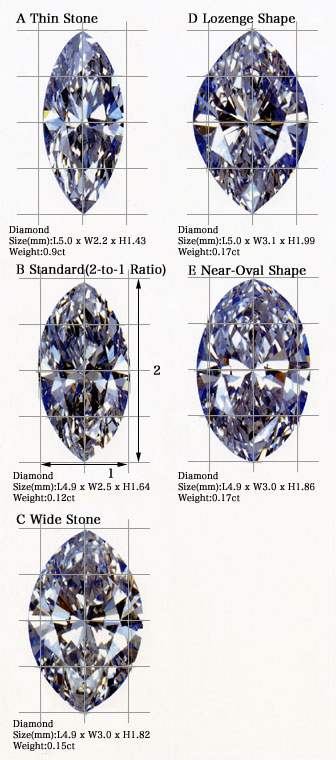 |
 |
MARQUISE
FACE-UP PUTLINE
A 2-to-1 length-to-width ratio (see B, to the right) is generally considered standard for the marquise cut. Regardless of size, the quantity of rough material that is suitable for cutting to these dimensions is limited. If rough that is suited for a round brilliant cut is made into a marquise instead, much of it ends up as dust, making it uneconomical. Each rough gemstone is different, and since the cutter decides on the exact shape to polish according to the rough, some may end up as somewhat thin stones (A) or wide stones (C) that do not have a length-to-width ratio of exactly 2-to-1. High-quality diamond rough is very expensive, making it necessary to consider the price performance of the finished stone, and the ideal length-to-width ratio is a matter of personal preference.
Among marquise cut diamonds of the same size, there are those that have an angular, lozenge shape (D), or a nearly oval shape (E). Both of these are considered to be lacking in beauty, and are not used in fine jewelry except in special cases. |
|
 |
|
|
 |
|
 |
|